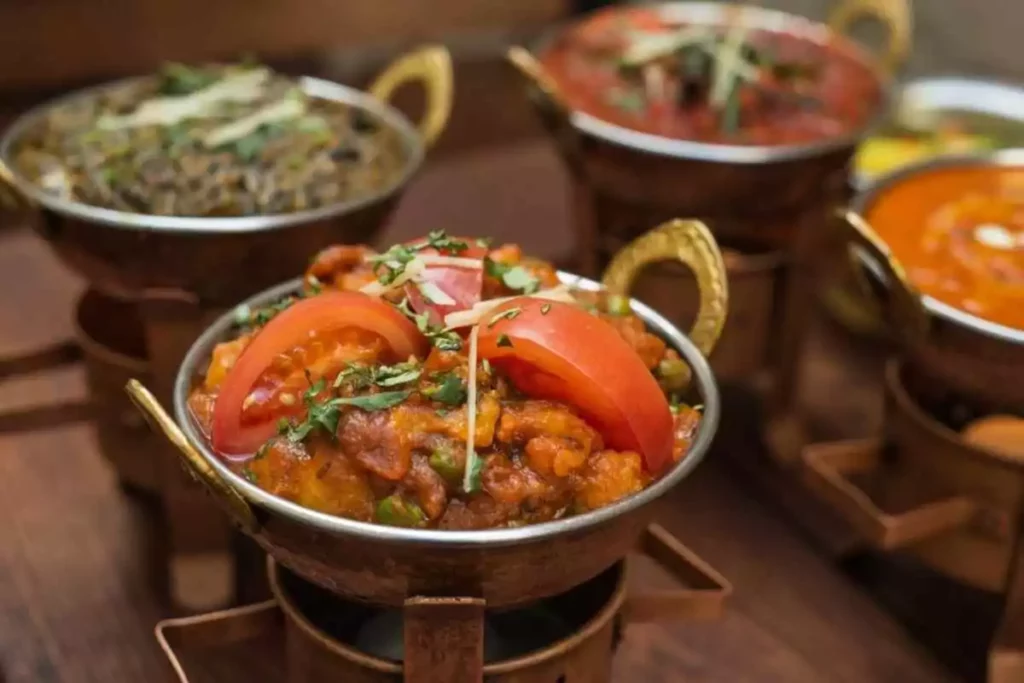Hindu Food
Table of Contents
Introduction
Welcome to the ultimate guide to Hindu Food! In this comprehensive article, we’ll delve into the world of Hindu cuisine, exploring its rich traditions, flavors, and the principles of Ayurveda that underpin it. Discover the Best Guide to Hindu Food, where we not only showcase the mouthwatering dishes but also provide you with 3 fundamental Ayurvedic rules that enhance the dining experience.
From aromatic spices to wholesome ingredients, Hindu Food offers a holistic approach to nourishment and well-being. Whether you’re a food enthusiast or someone seeking a healthier lifestyle, this guide will unlock the secrets of Hindu Food and help you embrace its wisdom. Let’s embark on this flavorful journey and unravel the delights of Hindu Food together.
Hinduism began over 5,000 years ago near the Indus River, though some aspects of the religion are much older. Hinduism, which originated in India and is widely regarded as the world’s oldest and third largest religion, is based on a love of nature and the value of living a simple, natural life. The Hindu tradition does not have a creator and is better understood as a set of closely linked religions rather than a single one. Hindu food is eaten not only to survive, but also to remain healthy and maintain a healthy mind-body balance.
Vegetarianism is encouraged in Hinduism, as is the avoidance of any animal meat or flesh. Not all Hindu foods are vegetarian. They can, however, follow the religion’s dietary guidelines to varying degrees. Since the cow is revered as a sacred animal, even meat-eating Hindus can refrain from eating it.
Some Hindus eat eggs, while others do not, and some even refuse onion or garlic; it is best to check with each person. Dairy products are suitable as long as they are free of animal rennet; for example, some Hindus can only eat cottage cheese. It’s important to note that strict vegetarians would object to vegetarian products being served on the same plate as meat.
According to Hindu food customs, three ayurvedic laws must be strictly followed, depending on the impact of foods on an individual’s body. Tamas, Rajas, and Sattva are the three laws.
Tamasic food
Tamasic food is stale, overripe, spoiled, or other impure food that is thought to elicit unpleasant feelings such as anger, envy, or greed.
Rajasic food
Rajasic food is thought to develop high emotional values, passions, and mental restlessness. Fish, eggs, seafood, herbs, onions, garlic, chili peppers, pickles, and other pungent or spicy foods fall under this group.
Sattvic cuisine
Sattvic cuisine, which includes fruits, nuts, whole grains, and vegetables, is the most attractive kind of food because it is non-irritating to the stomach and purifying to the mind.
On festival days, the majority of Hindus observe intermittent fasting for religious purposes, although this practice differs according to local traditions and preferences. Fasting is a physical and moral reboot that improves the health of the human body. When a fruitful religious fast is completed, there should be no need to feed or be in a rush.
Non-vegetarian Hindu cuisine includes rice, fish, and poultry, as well as some red meat. In addition to dairy meat, eggs, and dairy products, some of them eat beef. Good spices, beef, rice pilaf, and naan are all part of the Mughal cuisine served in any restaurant as typical Hindu food. Southern Indian cuisine is predominantly vegetarian and includes the highly common coconut milk & lentils.
The following are few examples of Hindu dietary rituals and practices:
- A real devotee would refuse to eat something that hasn’t been given to God first. It is mandatory to obtain God’s blessing before eating the fruit. Hindus will do this by offering their everyday meal to the deities they worship and reciting slokas (prayers).
- Before beginning every daily meal, a religious Hindu purifies the plate by sprinkling water around it.
- To remember the debt owed to the devta runa (divine forces) for their benign grace and safety, five morsels of food are set on the side of the table.
- The holy sign “OM” is applied to the birthday cake along with the words “Happy Birthday” during a child’s birthday celebration.
Please remember, this article does not cover everything that Hindus consume in India; it ranges from state to state. Just about 30% of Hindus are vegetarians, so the rest eat whatever mammals, birds, fish, and shellfish are available and permitted by their religion.
Conclusion
This comprehensive guide has shed light on the enchanting world of Hindu Food, where flavors, traditions, and the principles of Ayurveda intertwine. By following the 3 basic Ayurvedic rules provided, you can enhance your culinary experience and embrace the holistic approach to nourishment and well-being that Hindu Food offers. From the use of aromatic spices to the inclusion of wholesome ingredients, Hindu Food encapsulates the wisdom of centuries-old traditions.
Whether you’re a food enthusiast or someone seeking a healthier lifestyle, incorporating Hindu Food into your diet can bring numerous benefits. Unlock the secrets of Hindu Food and embark on a journey that nourishes both body and soul. Explore the vast array of flavors and embrace the transformative power of Hindu Food today!
Related Articles
Indian Food – A Comprehensive guide
Indian Cuisine – An Aromatic Speciality
Indian Restaurants – Where and What To Eat
Indian Sweets – 5 Unique and Delicious Treats
8 Best Crispy & Crunchy Indian Snacks to Satiate your Hunger
The Best 7-Day Indian Diet food Chart For Losing Weight Effectively
A Best Guide to Typical Indian Meals With 7 Basic Dishes

